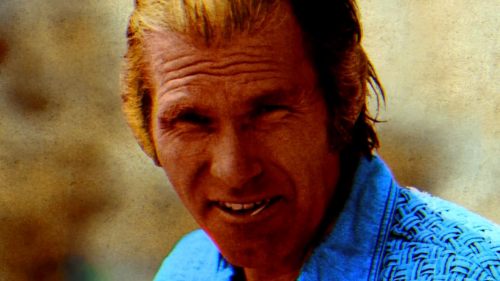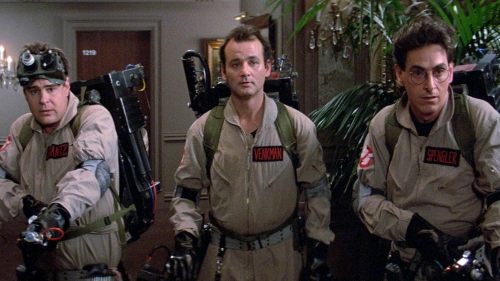Collins’ Crypt: More Found Footage Movies Should Follow ENTITY’s Lead
As you may have read via Devin's very awesome (I teared up!) eulogy for my site Horror Movie A Day, I am no longer doing that to myself. The site will still be up and updated on occasion (one or two times a week, hopefully), but no more daily activity. There are a couple of reasons why, but there's one that's relevant for this particular article - I was sick of seeing the same kind of movies over and over, leaving me little choice but to repeat myself. For example, in the past two years, I've seen nearly forty found footage movies, and half of them involve a ghost hunting or documentary team going to an abandoned hospital or asylum for whatever reason. There's only so many times I can see that sort of thing and continue to find new things to say about them, so if you're mad at me for quitting, blame the folks who keep thinking that "Blair Witch in a hospital!" is a novel idea.
But there's still some life to the concept, as the new release Entity proves. It's this month's VOD selection from Fangoria Presents (you can rent the disc copy now, and buy it this June), and on paper it sounds like all those other movies: a small documentary team heads out to a Siberian forest to investigate the deaths of thirty or so people who were found in shallow graves, stumbling upon an abandoned institute that may shed some light on what happened. But here's the thing - most of it is shot like a normal movie! There are a few "camera" sequences early on as they work on their documentary, and one or two setpieces that use the POV gimmick, but otherwise first time writer/director Steve Stone thankfully shares my sentiment that there are enough of these goddamn things in the world already, and opts to utilize the idea but not the tired execution.
And you might think that it would be confusing to switch back and forth, wondering if you're watching someone's POV or not, but Stone goes about it smartly - when it's a POV scene, it's SPECIFICALLY so, with people talking to/looking at the lens, or utilizing night vision or something to make the distinction clear. Likewise, when it's normal, we often see the guy with the camera, or static/wide shots of the whole group that make sure we know the difference - it's the sort of thing that takes careful planning and discipline, and Stone pulls it off gracefully. And that's even more impressive when you consider how many of these things seem to be made by folks who forget that their cameras are supposed to be through the eyes of one of their characters - I don't know how many times I've seen a found footage movie where a character is attacked by a zombie or ghost and the guy with the camera will inexplicably turn to show another friend reacting to it!
See, the problem with a lot of these new films is that they're inspired by The Blair Witch Project and Paranormal Activity but often skip a crucial element that made those films so successful - they don't have the actors shoot the bulk (all, in Blair's case) of the film themselves, opting to put a cameraman or the director himself in control of the camera. They, unlike an actor playing a character with a camera in his hand, will often think of getting the best shot, not what the character they are supposed to be playing will shoot. You might think it wouldn't matter, but trust me it does - the scenes in Blair where (sound guy) Mike has the camera are noticeably less "professional" than the ones that Josh did. Some directors might take it into consideration, but it's pretty interesting that the ones that people seem to love the most (and were certainly met with the most success) were the ones that TRULY put you in the character's head by having those characters be the ones holding the camera, who will put their acting first and thus make it more real for the viewer.
Of course, that's not the only reason so many of these movies are bad, but it's certainly a big problem, and also demonstrates the poor thinking behind it. Just like 3D, it's a tool that needs to be used carefully to be successful, not just thrown in because it's the cool thing to do these days. These half-assed found footage movies (Knock Knock 2, Greystone Park, Back From Hell... these are some of the ones I've suffered through recently, and the two worst movies I saw in 2012 were both FFs: Amber Alert and Bigfoot: The Lost Coast Tapes) are the equivalent of the Alice in Wonderland/GI Joe 2 post-conversions - a boneheaded decision made by people who think it's something you can just APPLY. No, it takes some actual skill to pull off, possibly even more than it would to just make it normally. The benefit is that you can get away with quicker productions - lighting isn't as crucial as audiences expect to see some blurry/murky shots in these things, and you can get away with long takes and actors repeating lines over and over because they're "improvising". It's kind of ironic and sad that I have to praise Entity and its director for opting to make a real movie, but that's the case - when's the last time you saw something like this shot traditionally?
The other benefit to his approach is that it allows the movie to have a real ending, which is often the biggest hurdle for these things as there's not much you can do once there's no one left to hold the camera. The last cam scene is probably 15-20 minutes before the end credits begin to roll, which not only keeps the pacing tighter than you'd normally get but keeps the focus on our heroine (Charlotte Riley), allowing her to be on-screen as opposed to just a voice behind a camera. But with the setup, Stone is free to use the POV gag when it actually makes sense to do so, and it baffles me that I see so few of these "best of both world" movies. Lovely Molly (incidentally FROM one of the Blair Witch guys, Eduardo Sanchez) is an even better example - it's traditionally shot except for when Molly picks up a camera for a few extended sequences that provide scares AND some answers as to what is going on. Again, it takes skill to pull off, because you run the risk of confusing the audience (if they care enough to think about it) and also have to know when to use it and when to hold back, which can probably increase production planning, but if the results are solid (as they are for these two films), then it's worth it, no?
But, it's the big thing these days, and I have to remember that most folks don't see all the DTV/indie ones I found while hunting down stuff to watch every day. So it's no surprise that the trailer highlights the POV scenes and has text like "A paranormal investigation...", which will attract those who are actually not yet sick of the Paranormal Activity movies who find themselves dead smack in between new entries right now and thus will need a fix. It certainly offers those type of thrills and will make for a fine VOD rental (at night! This is a slow burn creepout one along the lines of Session 9 and thus demands an appropriate setting), but it's more than that - don't be turned off by its found footage-ness! It's a real movie!
P.S. Some irony - one of the first "found footage" movies was Cannibal Holocaust, and that one ALSO opted to split the difference between someone's footage and traditional filmmaking. In 30+ years, you can seemingly still count the number of horror films that "copied" their approach on one hand.



